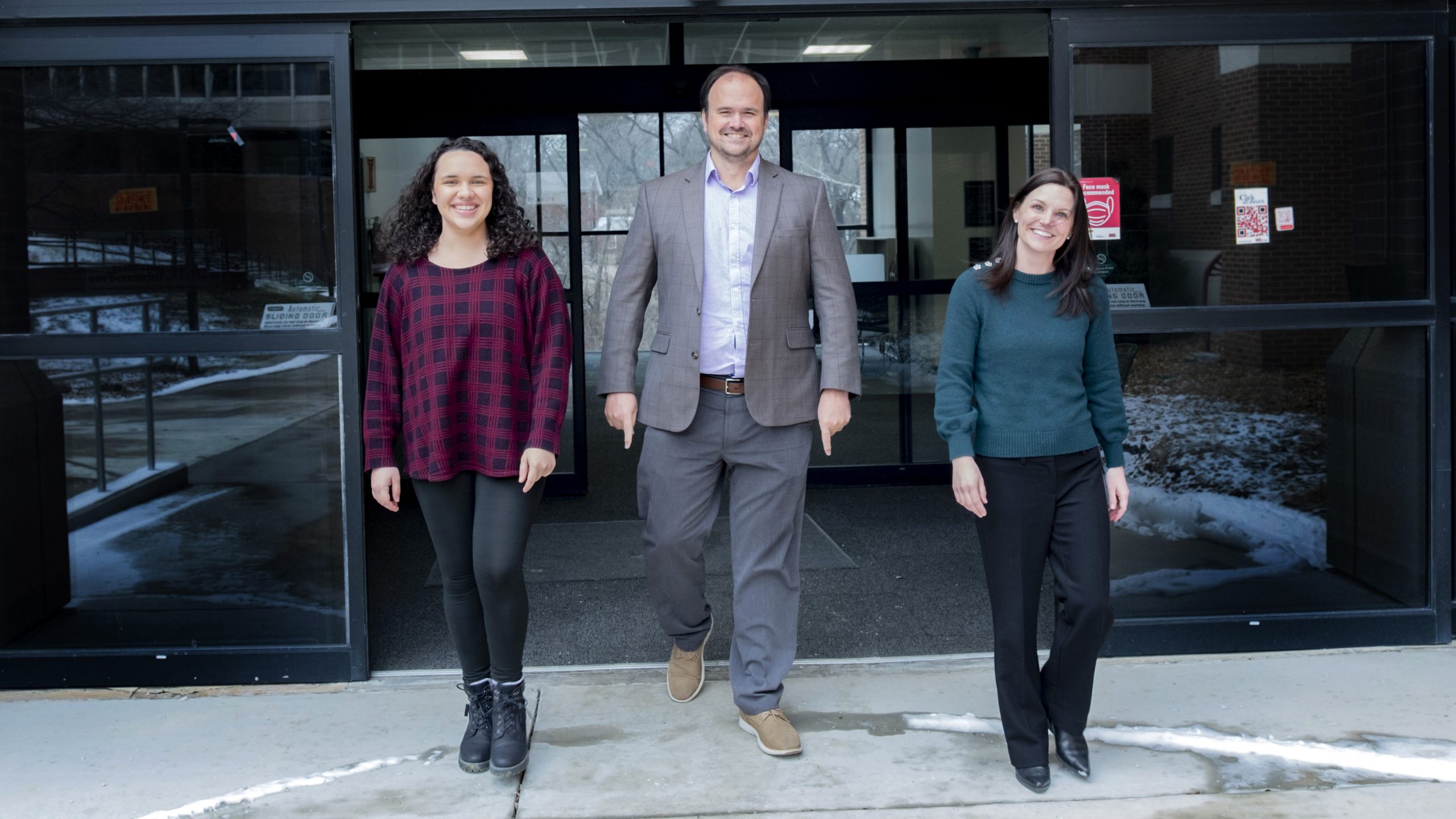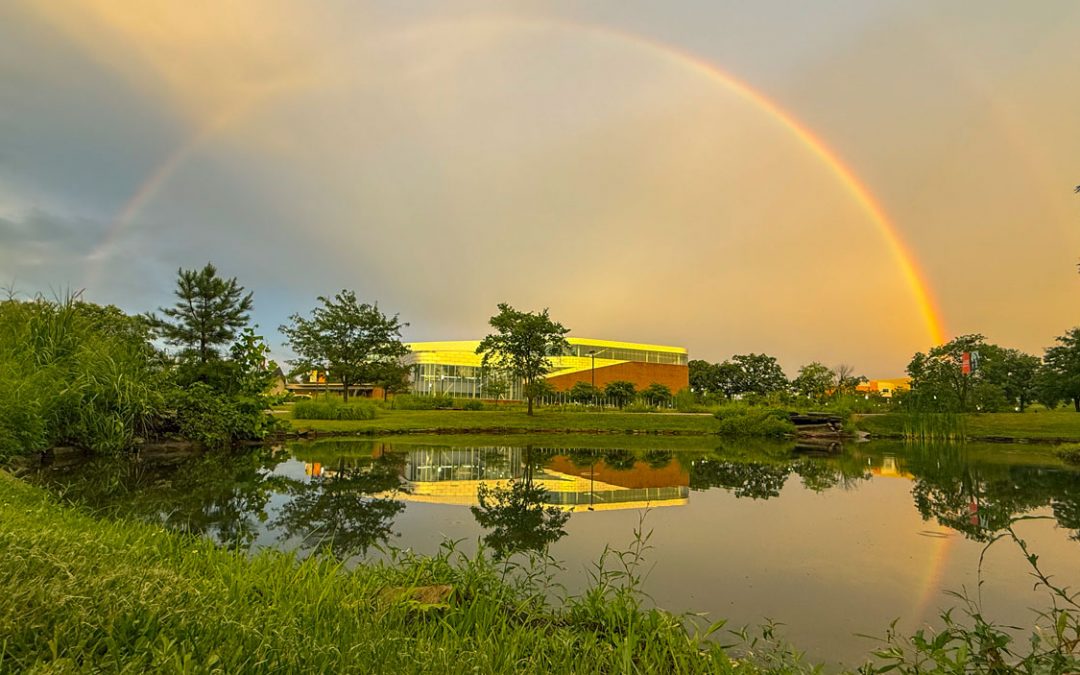
Matias Enz (center), an assistant professor of supply chain and analytics, researched solutions to the supply chain breakdown that took place during the height of the COVID-19 pandemic, with support from PhD student Paula Penagos (at left) and his colleague and Associate Teaching Professor Jill Bernard Bracy, the associate director of the Supply Chain Risk and Resilience Research Institute. (Photo August Jennewein)
The COVID-19 pandemic created severe fractures in supply chains that caused global disruptions when it began in 2020 and that have continued to varying degrees until today.
From manufacturing to transportation, many factors impeded the ability of consumers to get their goods. The St. Louis region, a logistics and supply chain hub that links commerce locally and globally via railroads, several major interstate highways, airports and barge traffic along the Mississippi and Missouri Rivers was also greatly impacted.
Matias Enz, an assistant professor of supply chain and analytics at the University of Missouri–St. Louis, along with colleagues in the Supply Chain Risk and Resilience Research Institute, performed research to clarify issues that caused the major breakdown in supply chains in the region and to determine the most effective ways to manage the interruptions.
“The goal of the project was ultimately to know what are the most efficient strategies that can be employed, let’s say for managers to implement in case there are other disruptions, so those learnings could be applied on a daily basis,” Enz said.
Enz also noted that the severity of the supply chain issues caused businesses to look for solutions.
Jill Bernard Bracy, an associate teaching professor and the associate director of the Supply Chain Risk and Resilience Research Institute, explained that challenges in supply chain aren’t new, but the pandemic exaggerated several concurrent issues.
“The pandemic forced consumer behaviors to change, and we saw an explosion in ecommerce,” she said. “And then we had labor issues caused by the pandemic – whether people weren’t working or the shifts were changed for social distancing or they were shut down because of infections. We saw this huge change in consumer behavior along with disruptions to labor.”
To assist with the study, the Council for Supply Chain Management Professionals, a supply chain professional organization, sent out 500 surveys to mid- to large-sized companies in St. Louis and Illinois that are mainly in transportation, manufacturing and warehousing, including several business represented on the UMSL Supply Chain and Analytics Advisory Board. The data was compiled from 120 responses from individuals in management.
Lack of communication and collaboration across divisions, which Enz noted as being typical, stood out as a main factor in the supply chain disruptions occurring during the height of the pandemic.
“The pandemic was the catalyst for managers to start collaborating according to our results, to start communicating more,” Enz said. “Otherwise, it would have been impossible to operate in that context.”
Collaborative communication is what will help divisions of companies involved in supply chain management stay on the same page and mitigate the severity of the challenges that have been experienced over the past three years.
Enz will be presenting his research findings at the International Conference on Logistics and Supply Chain Systems in Spain in June. He also hopes to get the work published in a higher education journal.
PhD student Paula Penagos, who helped coordinate the European components of the research with businesses from France and Poland, noted that managers of those companies were more willing to participate in the survey than those locally.
She also believes that though the pandemic caused extreme hindrances in supply chains, the solutions are evergreen.
“I think it’s important to mention that although we’re talking about COVID, COVID is one of a million disruptions that supply chains can have, and the insights here can be applicable to any of those disruptions,” Penagos said. “So COVID was our case study, but it’s not the only time we can implement them.”
Media Coverage
St. Louis Public Radio














